Sunday, April 8, 2018, the Second Sunday of Easter (Divine Mercy Sunday)
Sometime last fall, I received an email from the Vatican informing me that Pope Francis wished to meet with all the Missionaries of Mercy from April 8 to 11 in Rome. From the email, I knew the world had changed forever: In order to register, I had to fill out a Google Form. When you get Google Forms from the Vatican, you know that things have changed!
Our first day began with the Missionaries of Mercy concelebrating Mass with the Holy Father at St. Peter’s, up on the esplanade outside the Basilica. That’s the first time that I’ve been that close to the action! As is always the case, Pope Francis gave a great homily. He spoke of the central role of mercy in the life of the Church and in each person’s life and harkened back to Thomas, saying that, when Thomas put his fingers into the wounds of Jesus, he received the mercy of God. At the end of the Mass the Holy Father thanked the Missionaries of Mercy for their service to the Church and to the People of God.
After Mass I met up with Father Tony, a priest Cardinal Joe Tobin, CSsR, cardinal archbishop of the Archdiocese of Newark, had introduced me to via email, for a tour of the Vatican.
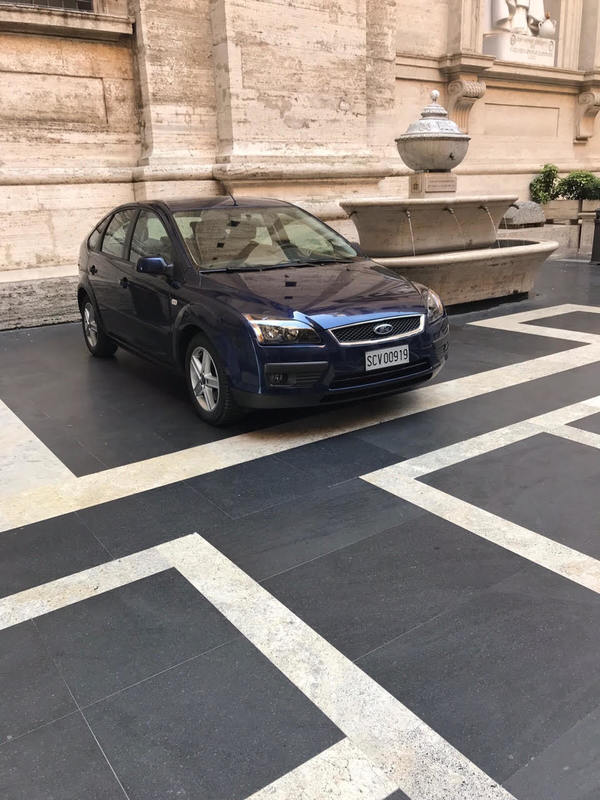
Tony took me everywhere — to the cupola, to the tombs of the popes, and more. We were walking from the cupola when I saw a simple Ford car parked at the top of a staircase. Tony identified it: “That’s the Holy Father’s car.” We waited for a few moments thinking that the Holy Father would come up a staircase and get in the car, but alas, his driver showed up alone. The pope had decided to walk back to where he lives, so the driver had arrived to move the car. Dang. How amazing would that have been? Just Pope Francis, his driver, Tony and me.
After our almost-encounter, Tony took me to the Domus Santa Marta, where the Holy Father lives. The Domus is the place where the Cardinals stay when they gather to vote for a new pope — something I hope they won’t have to do for many more years. Right after Francis was elected pope, he decided to not live in the Apostolic Palace. Rather, he would live at the Domus, alongside many other Vatican employees.
The pope’s room is on the second floor, which Tony pointed out from the outside.
“Do you see the only room where the shutters are open and you can see the curtains?”
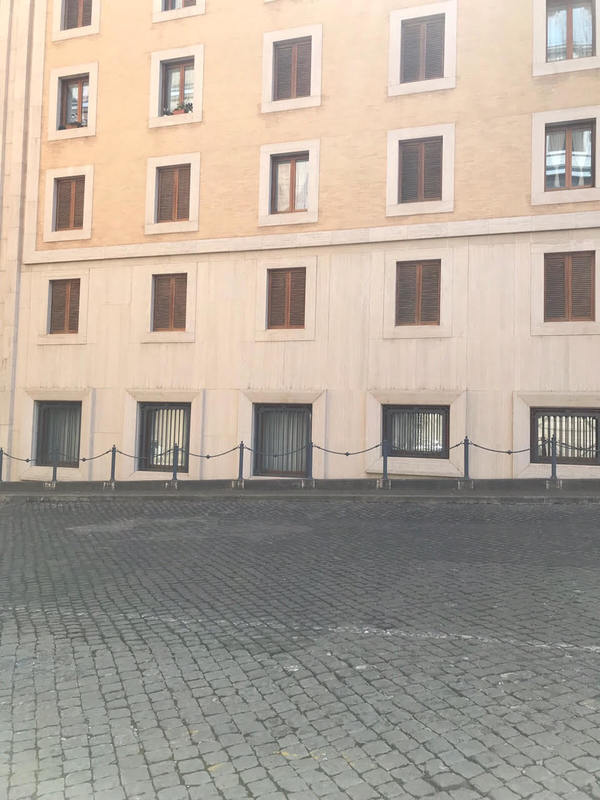
“Yes,” I said. That’s the Holy Father’s room. They prefer that you keep the shutters closed, Tony explained, but Pope Francis doesn’t like that. So he opens the shutters and you can see the curtains.
“No one says anything to him,” Tony told me, because, “well, he’s the pope.”
At the front door of the Domus, we were greeted by a Swiss guard. Then we went inside the building.
We went into the chapel where the Holy Father celebrates Mass many mornings. I sat in the pope’s chair, I kissed the altar that he kisses, and stood at the pulpit where he preaches. I felt like a little kid in a candy store walking all over the chapel and touching everything and thinking about the Holy Father and praying for him. I love him.
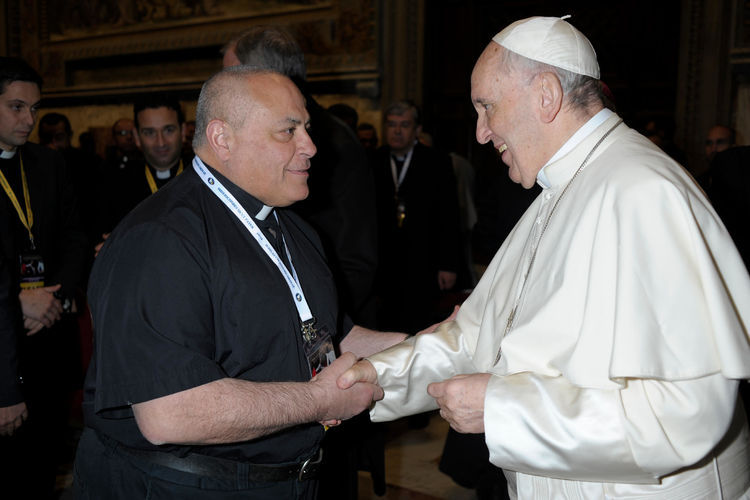 Courtesy of L'Osservatore Romano
Courtesy of L'Osservatore Romano
Then Tony showed me the dining room where the pope eats. Many other people who live or work at the Domus also eat there, and Tony introduced me to one such diner, Alessandro, while we looked in on the dining room through a window. After Alessandro headed into the dining room, Tony explained who this new acquaintance was: the pope’s personal assistant.
“He has more access to the Holy Father than any other person,” Tony said.
I had a copy with me of my book, The Relentless Mercy of God, for the pope just in case I would see him. This seemed like as good a chance as any, so I asked Tony if I could give the book to Alessandro to give to the pope. He said, “Yes, of course.”
So I quickly signed the book to him — “Carissimo Papa Francesco” and some words in Spanish — and bundled it with a small box of South Bend Chocolate Factory sweets that I had bought at the airport. I went into the dining room to give the delivery to Alessandro but couldn’t find him. I asked around, and someone said he was in the kitchen. So I went into the kitchen, found him, and asked him to give the book and the chocolates to the Holy Father. He said that he would.
Here I was wandering around this dining room as though I knew what I was doing. The level of security made me chuckle. I was a complete stranger wandering around the dining hall looking for the Holy Father’s personal assistant, yet the TSA makes us take off our shoes as though they were filled with South Bend chocolates (or whatever).
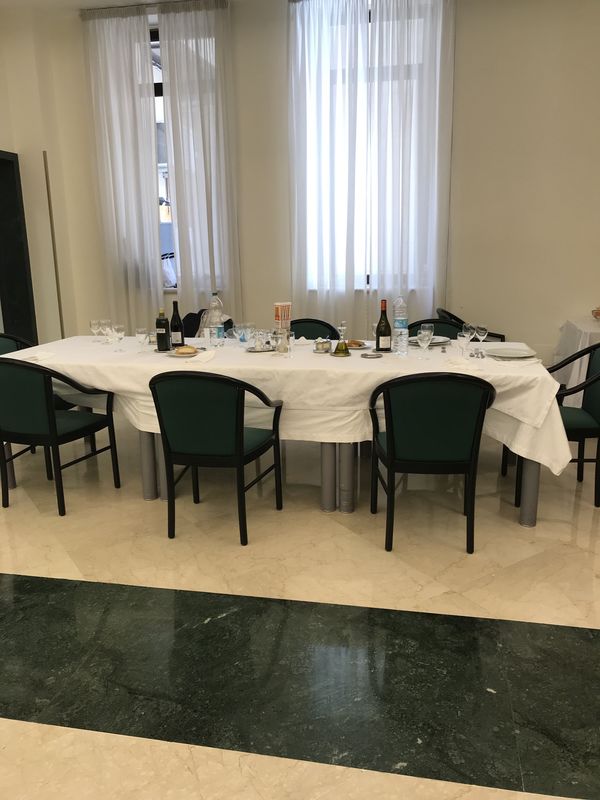
Tony eventually followed me into the dining room and showed me the table where the pope has his meals. It seats eight. It’s totally simple. It looks like all the other tables in the dining room, though it’s off to the side by itself. Alessandro told me that the pope already had lunch. So I went over to the table and took piece of bread from the breadbasket so that I could say that I had a piece of bread from Pope Francis’ table. The bread was delicious, of course — perfect crust — but I was in Italy. So of course it was going to be perfect crusty bread! I also took a small package of bread sticks (I haven’t eaten them yet), and I thought about taking some of the silverware and putting them on eBay. “The pope’s fork!” “The pope’s spoon!” But I refrained.
After the Domus visit, Tony took me on a diving tour of the beautiful Vatican gardens. (I’d previously only seen them in pictures.) While driving around the gardens, we passed by Pope Emeritus Benedict’s home in a monastery where the sisters tasked with taking care of the pope live. I prayed for Pope Emeritus Benedict in gratitude for his tremendous gift of humility to the Church by resigning when he felt that he no longer had the strength and the ability to serve the Church as the Successor of Peter. As we drove past his residence, I thought, “Well, this is the first time that I’ve ever been by two popes’ houses!”
It was quite a day. I won’t forget it.
Monday, April 9, 2018, Monday of the Second Week of Easter
Monday was a very full day. Our morning classes were at the Pontifical Lateran University, an impressively modern 245-year-old institution near the Cathedral Basilica of St. John Lateran. After lunch we broke into language groups for more lectures and Masses at different local parishes. I went with the English-speaking group, but I should have gone to the talk in Spanish. I can understand Spanish better than I can understand British!
The best part of the day was listening to five of my confreres — from Italy, South Korea, Panama, Oceania, and Guinea — talk about their experience serving as Missionaries of Mercy. I was really inspired by their reflections and comments. The Missionary of Mercy from Oceania spent the entire Jubilee Year of Mercy traveling in a camper to dozens of communities that do not have a resident priest and who might see a priest just five or six times a year. In each place he would show up on Saturday, celebrate Mass on Sunday, and then sit in the parish church for 10-12 hours every day for the week to meet with anyone who wished to come in. As the week went on in each place, more and more people came to the church to talk with him.
In Panama, the Missionary of Mercy set up a confession station at the country’s busiest railroad station. He spoke about how many people came to confession when they saw a priest sitting there with his stole on.
I was truly inspired by the generosity and holiness of these priests. And I came away with a few ideas how we might make this sacrament of mercy more available to our students at Notre Dame, especially to those who have not gone to confession for years and, for whatever reason, don’t go to the Basilica.
Tuesday, April 10, 2018, Tuesday of the Second Week of Easter
On Tuesday our class was in the Sala Regia of the Apostolic Palace. The first talk was from Archbishop Rino Fisichella, the president of the Pontifical Council for the Promotion of the New Evangelization. I like him. He gave a good talk.
This was followed by a talk from Pope Francis, who was, as always, outstanding. After he walked into the room (smiling as he always does), Archbishop Fisichella welcomed him and told him that we are the Missionaries of Mercy whom Pope Francis had appointed during the Year of Mercy. Of course, the pope knew this, but it’s part of the protocol of how these things are.
“Holy Father, not all the Missionaries are here who were here two years ago,” the archbishop said. “Some have gone home to paradise, some have been named bishops, and some could not make the trip.”
Without missing a beat, Pope Francis said, “I hope that the ones who have become bishops are still merciful.” He smiled and we all laughed.
Then the Holy Father gave his talk. It is so clear that mercy is not a program or a project for him. IT IS EVERYTHING. Mercy is not something abstract. It is a way of life, a way of living that brings everything together. Francis often says that he wishes “mercy” were a verb because it functions like one. He told us why, even though the Jubilee Year of Mercy ended in November of 2016, he asked us to continue as Missionaries of Mercy. He said that during the Year of Mercy, he received so many testimonies about people whose lives were changed by interacting with a Missionary of Mercy that he decided to ask us to continue on indefinitely. He reminded us to be gentle, to smile, to be welcoming to penitents, to not ask unnecessary questions, which most of them are. He explained that, when a penitent comes to confession, he or she has already had an encounter of love with the Lord who has brought them to this place. The Church can never put any kind of obstacle to anyone who wishes to come to this sacrament, pointing out that, when the Prodigal Son decided to return to his father, he did not have to go through customs or immigration. Francis reminded us that it is Christ who waits in the confessional, Christ who welcomes, Christ who forgives, Christ who blesses. I truly could have listened to him for hours. He also asked us to do as much as we can to hear confessions. He believes that this sacrament is an inexhaustible sign of God’s mercy in the Church and in the world.
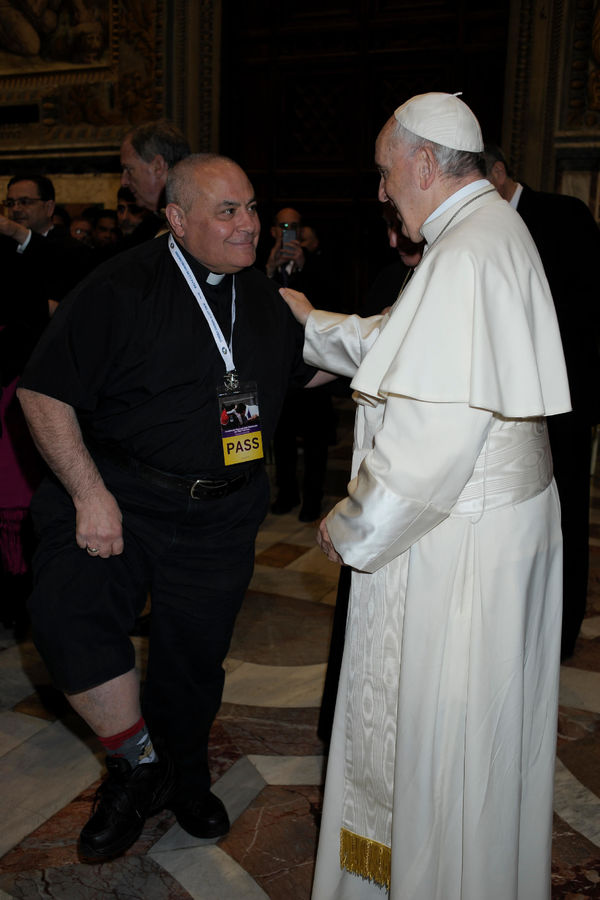 Courtesy of L'Osservatore Romano
Courtesy of L'Osservatore Romano
At the end of the talk, he said, “I want to meet each one of you and shake your hand and thank you for your service to the Church. Most people want to meet the pope, but I want to meet you.” I was one of the first to greet him since I had pushed my way up from the fifth row to the third. I shook his hand, told him that I loved him, and hugged him and kissed his cheek. I just happened to be wearing my Pope Francis socks that day, so I pulled up my pant leg and showed the socks to him. He smiled.
I can’t even imagine how exhausting it would be to shake hands with almost 600 people as he did. He said that he wanted to do this to show his regard for our work. He made me cry. Imagine — the Holy Father thanking us for our work. But this is vintage Francis. This is who he is. I love him.
Then we all celebrated Mass with him inside St. Peter’s Basilica at the Chair of Peter. We all processed into the Basilica from the entrance, which is no small feat — I think that I did my 10,000 steps for the day just processing in and out.
Pope Francis is man of prayer. He truly prays during the Mass. You can just see it. After communion, he sat in his chair and was absorbed in prayer. As luck would have it, I was seated directly in front of where he sat and where he preached from, just two rows back. I was moved by his homily as he talked about the effectiveness of gentle and kind priests.
After Mass we were each given a beautiful gift from the Holy Father. It is a bronze plaque depicting the return of the Prodigal Son — a replica of one of the “squares” in the holy door.
Tuesday was another incredible day that I will never forget.
Wednesday, April 11, 2018, Wednesday of the Second Week of Easter
On Wednesday our class was once again at the Pontifical Lateran University. Archbishop Octavio Ruiz, the number two guy in the Pontifical Council for the Promotion of the New Evangelization, gave a great talk. (I first met Archbishop Ruiz here at Notre Dame two years ago when he was on campus to give a talk.) Following this, we all concelebrated Mass at the Cathedral Basilica of St. John Lateran. It is the oldest and highest-ranking of the four papal major basilicas, giving it the unique title of "archbasilica". Because it is the oldest public church in the city of Rome, and houses the cathedra of the Bishop of Rome, the pope, it has the title of ecumenical mother church of the Catholic faithful. Archbishop Rino Fisichella presided and preached.
It’s clear that the Holy Father will continue preaching about mercy, offering mercy, and making mercy the hallmark, so to speak, of his entire Pontificate. He constantly says that God gave him mercy, that God has always been merciful to him. I know that same reality. God showed me his mercy.
I left our gathering evermore grateful to God for my vocation to the priesthood and more convinced than ever of my unworthiness for so great a gift. Like St. Paul, I say of myself, I am the worst of all sinners. And God has shown me his mercy. I am beyond grateful to serve the Church as a Missionary of Mercy for as long as Pope Francis asks us to do so.
Lord Jesus Christ, Son of the Living God, have mercy on me.
Fr. Joe Corpora, C.S.C., is the Director of University-School Partnerships within Notre Dame's Alliance for Catholic Education, the associate director of pastoral care for students in Campus Ministry, and a priest-in-residence in Dillon Hall. He is one of 700 priests whom Pope Francis appointed in February 2016 to serve as Missionaries of Mercy and his book of reflections on this experience, The Relentless Mercy of God, was published last spring by Corby Books.